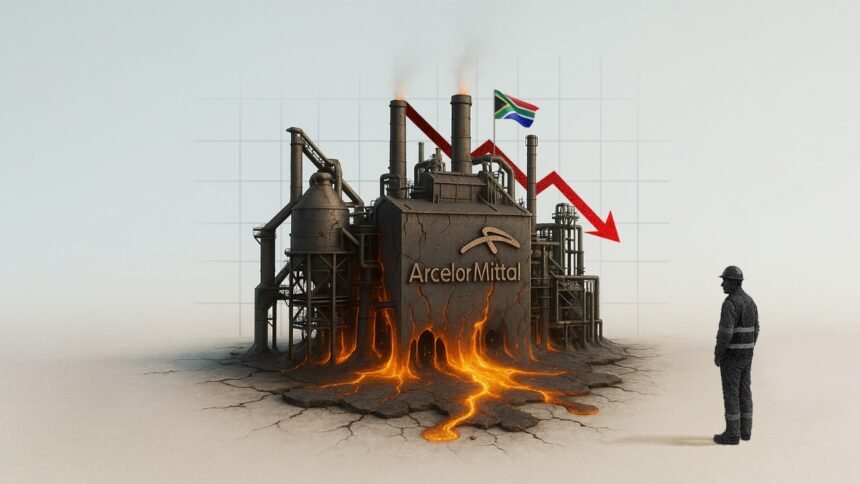The clatter of molten steel, the rhythmic hum of machinery, and the bustle of thousands of workers—these sounds may soon fall silent in parts of South Africa as ArcelorMittal, Africa’s largest steel producer, edges closer to shuttering key operations. The company has warned that despite months of negotiations and stakeholder talks, little progress has been made to avert the closure of its long steel operations in Newcastle and Vereeniging.
That means up to 3,500 workers, along with dozens of small businesses and contractors, are staring down a devastating economic cliff.
The reasons behind the potential closures read like a checklist of South Africa’s broader industrial challenges: high electricity costs, erratic power supply, weakening demand from construction and mining, poor rail logistics, and intensified global competition. Together, these pressures have created a perfect storm for the country’s once-proud steel sector.
“At this point, it’s not even about profit—it’s about survival,” said one company executive on condition of anonymity. “Every ton we produce costs more than it earns. We can’t sustain this.”
ArcelorMittal’s long steel division produces bars, wire rods, and other materials vital for the country’s construction, automotive, and mining sectors. If production halts, the ripple effects could destabilize key industries, hike prices, and increase reliance on imports—hardly ideal for a country still battling inflation and currency volatility.
The company first raised alarms about the viability of these plants in 2023. Talks with unions, local governments, and national stakeholders followed. Proposals ranged from wage concessions and energy subsidies to rail upgrades and government-backed rescue packages. But none have materialized fast enough—or fully enough—to meet the company’s bottom line.
Trade unions are fuming. The National Union of Metalworkers of South Africa (NUMSA) has accused ArcelorMittal of corporate irresponsibility and profit-hoarding, insisting the company owes workers transparency and alternatives. “You can’t just pull the plug on thousands of families,” said NUMSA spokesperson Phakamile Hlubi-Majola. “We demand government intervention—not empty promises.”
But the government’s hands are tied. With a tightening national budget, ongoing energy crises, and rising debt, Pretoria has limited bandwidth to offer industrial bailouts, especially in a sector that’s seen significant decline over the last decade. The Department of Trade, Industry and Competition has said it is “exploring options,” but has yet to put forward a concrete rescue plan.
Meanwhile, local communities brace for the fallout. In Newcastle, a town already grappling with high unemployment, the steelworks are more than just an industrial anchor—they are the economic heart. “If that plant shuts down, this town goes with it,” said Thabiso Molefe, a local shopkeeper who supplies equipment to workers. “It’s not just jobs. It’s food, housing, school fees, everything.”
The larger question is what the slow-motion collapse of ArcelorMittal’s long steel operations means for South Africa’s industrial future. Once hailed as a regional manufacturing powerhouse, the country now faces a shrinking industrial base, falling productivity, and a growing trade deficit in basic goods.
Experts warn that without significant investment in infrastructure, energy security, and industrial policy, more sectors could follow steel’s slide. “South Africa needs a Marshall Plan for industry,” said economic analyst Nontokozo Dube. “Otherwise, we’re going to import our way into dependency.”
Even globally, ArcelorMittal is undergoing recalibration. With demand shifting to Asia and emerging technologies altering steel production methods, the company is pivoting toward greener processes and higher-margin products—moves that might leave South Africa’s aging plants behind.
The irony is that South Africa still has the raw materials and skilled labor to sustain a thriving steel industry. What’s missing is a coherent, coordinated response to structural challenges—one that includes government, industry, labor, and international partners.
For now, though, the steel giants are quiet. The furnaces still burn, but uncertainty hangs in the air like coal dust. Workers wait, communities worry, and an industry forged over a century teeters on the brink of rust.










